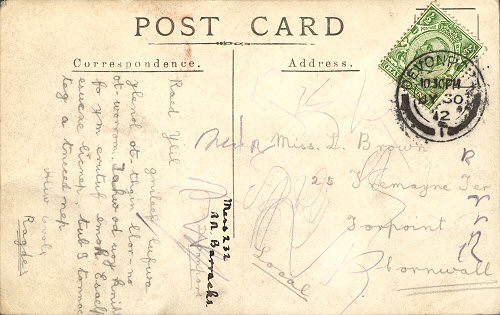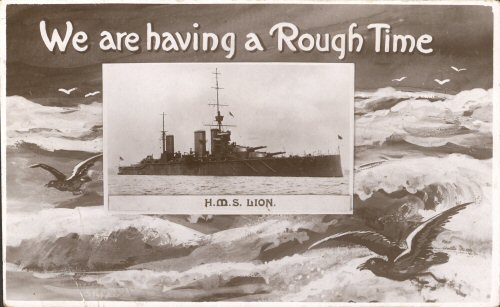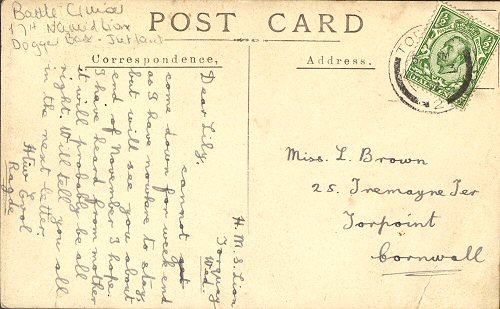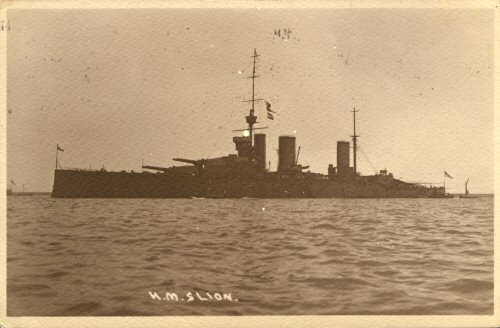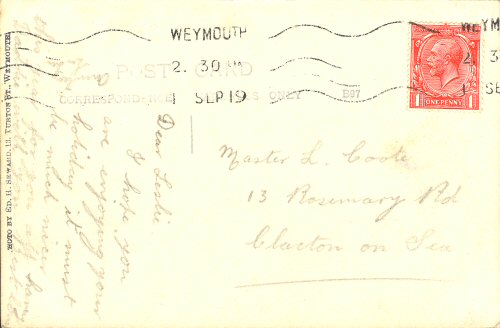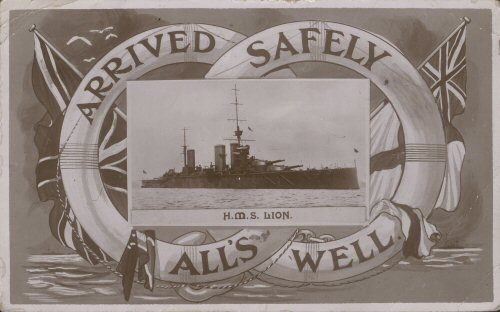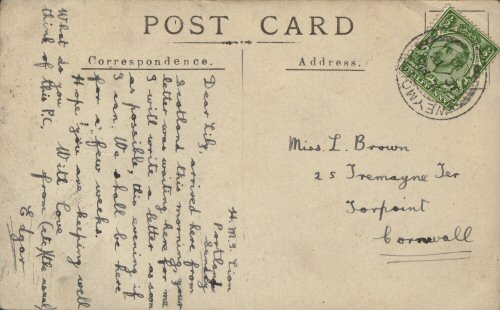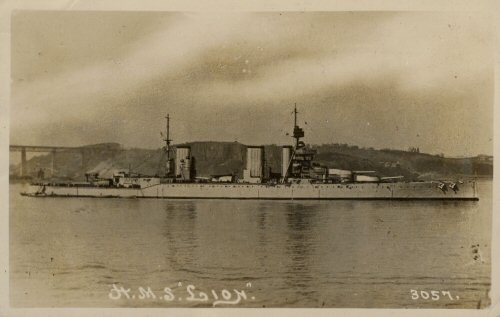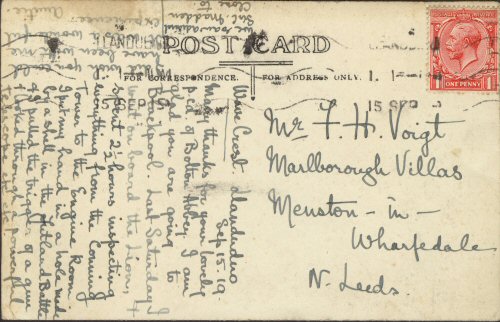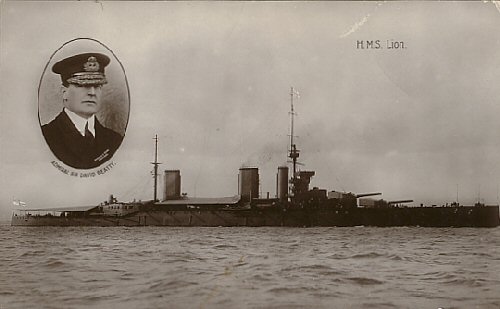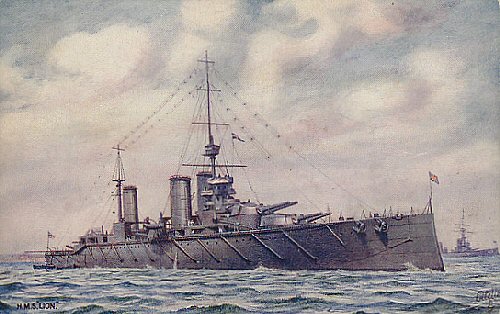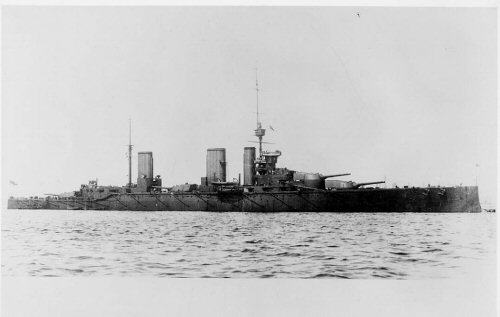
Scrapped 1924
Lion-class battlecruiser (3f/2m). L/B/D: 700 × 88.5 × 28.8 (213.4m × 27m × 9m). Tons: 26,350 disp. Hull: steel. Comp.: 997. Arm.: 8 × 13.5 (4 × 2), 16 × 4, 4 × 3pdr; 2 × 21TT. Armor: belt 9, deck 2.5. Mach.: geared turbines, 70,000 shp, 4 screws; 26 kts. Built: Devonport Dockyard, Plymouth, Eng.; 1912.
Laid down in direct reply to the challenge posed by Moltke, the Lion-class battlecruisers—"the splendid cats"—were the biggest and fastest capital ships ever laid down, and the first with all 13.5-inch turrets mounted on the centerline rather than en echelon. As flagship of Vice Admiral David Beatty's First Battle Cruiser Squadron, Lion's first major action was at the The Battle of Dogger Bank on January 24, 1915. There Beatty (with HMS Tiger, Princess Royal, HMS New Zealand, and HMS Indomitable) surprised Rear Admiral Franz von Hipper's battlecruiser squadron as it attempted to make a third raid on British North Sea towns. Lion — and so Beatty — was forced out of the inconclusive battle by two waterline hits received early on.
At The Battle of Jutland on May 31, 1916, Lion was in Beatty's six-ship squadron during the battlecruisers' "run to the south" that opened the battle. The fleets opened fire at 1548, and twelve minutes later, Lion only escaped a ship-killing explosion after a direct hit on the midships ("Q") turret thanks to the dying act of Officer of the Turret Major Harvey, who flooded the magazines. Two minutes later, Indefatigable blew up with the loss of 1,017 crew, followed twenty-four minutes later by the loss of Queen Mary with 1,266 men. Before pressing home his attack on Rear Admiral Franz Hipper, Beatty turned to his Flag Captain, A. E. M. Chatfield, and observed, "There seems to be something wrong with our bloody ships today."
Though she was quickly repaired following the battle, Lion saw little further action before war's end, except providing cover for an attempt to destroy the German mine-sweeping forces and their escorts off Helgoland on November 17, 1918. In 1924, she was broken up at Jarrow under the terms of the Washington Naval Treaty of 1922.
Built Devonport Dockyard, laid down November 1909, completed May 1912, cost £2,083,999.
World War 1 Service:
1st Battlecruiser Squadron Grand Fleet as flagship of Vice-Admiral Beatty.
28 August 1914 took part in The Battle of Heligoland Bight.
16 December failed attempt to intercept German battlecruisers bombarding English east coast.
24 January 1915 took part in The Battle of Dogger Bank.
April 1915 returned from repair after battle.
31 May 1916 took part in The Battle of Jutland. Hit by 13 12 inch and 1 5.9 inch shell with 99 killed and 51 injured. Fired 326 13.4 inch shells
July 1916 returned from repairs.
17 November 1917 part of covering force at the second Battle of Heligoland Bight.
1924 sold for scrapping.

